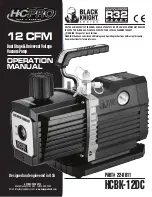
Picture 37
Picture 38 Sludge pump
Picture 39
Composting guidelines:
1.
Take into account any munici-
pal regulations on composter
placement.
2.
Use a suffi
ciently large
composter which will house
left overfood, sludge bags and
the required additives.
3.
Always supply additive to
the composter when adding
waste.
4.
If needed, stir the compost
and supply additive. A suitable
additive is e.g. a mixture of
peat and woodchip. The peat
will absorb odours and extra
fl uid and woodchip will ensure
oxygen circulation. When the
sludge bag is placed in the
composter, a larger amount of
additive is supplied.
5.
When replacing the sludge
bag, use protective gloves and
wash hands aft er touching the
sludge bag or compost.
The sludge bags may also be
composted in a so-called garden
compost for plant residue. The
bottom of the garden compost
must be sealed with e.g. tarpaulin or
construction plastic. A frame can be
built around the compost, together
with a lid to prevent water from
entering. The bottom layer of the
garden compost is fi lled with twigs.
A layer of plant waste or other ad-
ditive is always added on top of the
sludge bag.
The “raw compost” removed from
the composter or compost requires
post-composting.
A suitable time for post-composting
is one year. This ensures the com-
post is hygienic. Use the compost
material primarily for decorative
plants.
5.3.2 Sludge removal using a
vacuum truck
Sludge removal using a vacuum
truck is normally performed twice a
year. Vacuum truck emptying is not
the default setting in the treatment
plant. Sludge pumping into the
sludge bag is enabled until vacuum
truck emptying is enabled via the
soft ware (see section 4.3).
When vacuum truck emptying has
been selected, the sludge removal
reminder comes automatically
every six months. The reminder is
a guideline. The best way to deter-
mine the need for sludge emptying
is to perform a settling test every
two months. See the settling test
instructions in section 5.3.2.1.
When the settling test result shows
a sludge amount of over 500ml with
a 90-minute settling, it is time to
order sludge emptying.
1.
Check the sludge amount
in the process tank with the
settling test.
2.
Order sludge emptying when
necessary.
3.
Aeration must be active
during vacuum truck
emptying. If the process
tank does not show bubbles,
change the X3 into the
X6 socket to force the
compressor on. Aeration
starts immediately in the
process tank.
4.
The process tank is emptied
from the front of the tank
(picture 37) minding the
aeration disc at the bottom
(picture 38) until the
sludgepump appears .
5.
At the same time, also empty
the storage tank entirely
(picture 39). Mind the pump
and level switch at the bottom
of the storage tank
6.
Transfer the compressor plug
back to its own place aft er
emptying.
7.
Acknowledge the sludge
removal reminder or reset the
sludge counter (section 4.3).
8.
Lock the treatment plant
cover.
NOTE! Mind the pumps, level
switch and the aeration disc at the
bottom of the process tank during
sludge removal!
20
Содержание WehoPuts 10
Страница 30: ...DATE EVENT ALERT SERVICE PROCEDURE 30...
Страница 31: ...DATE EVENT ALERT SERVICE PROCEDURE 31...













































